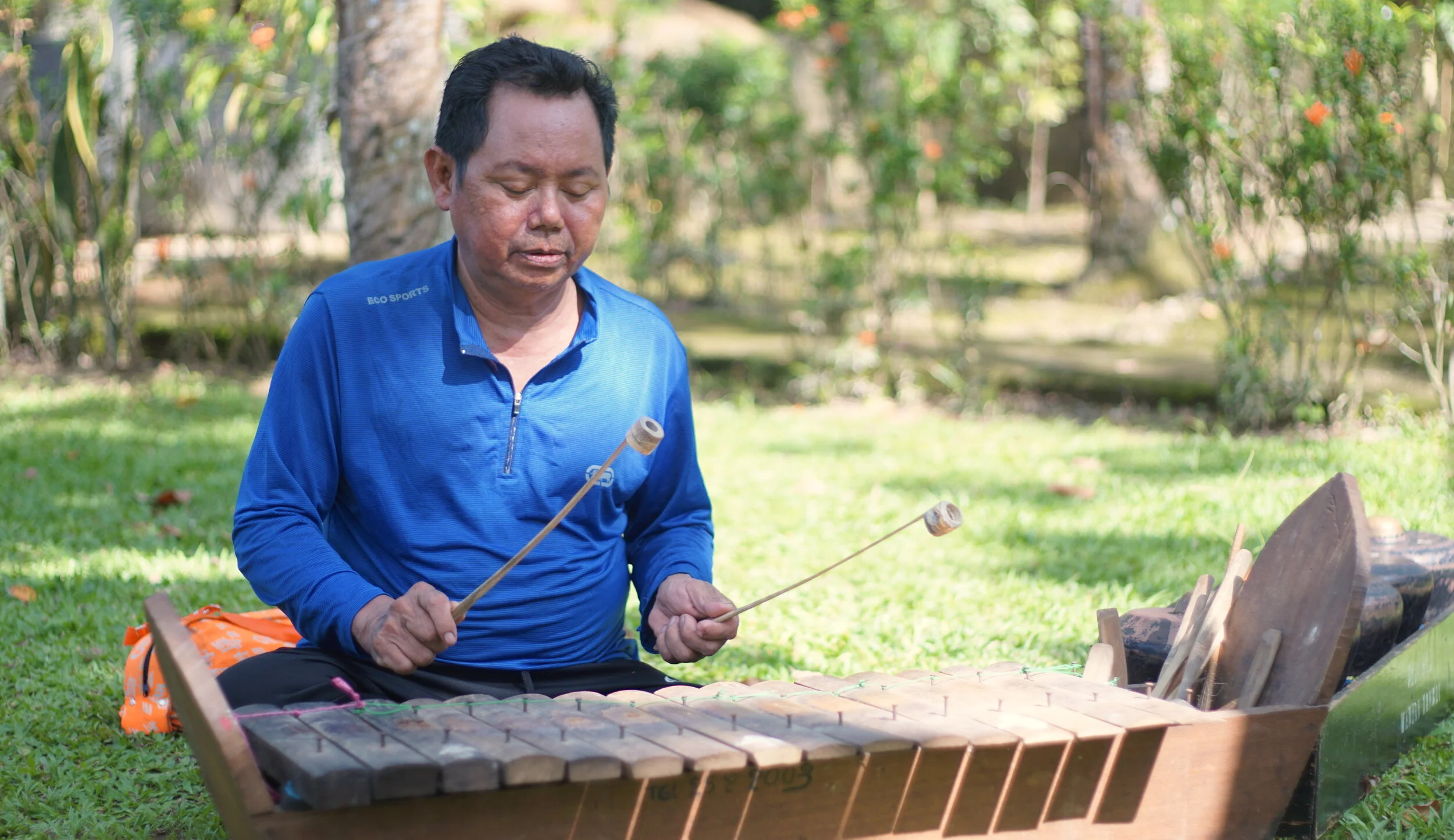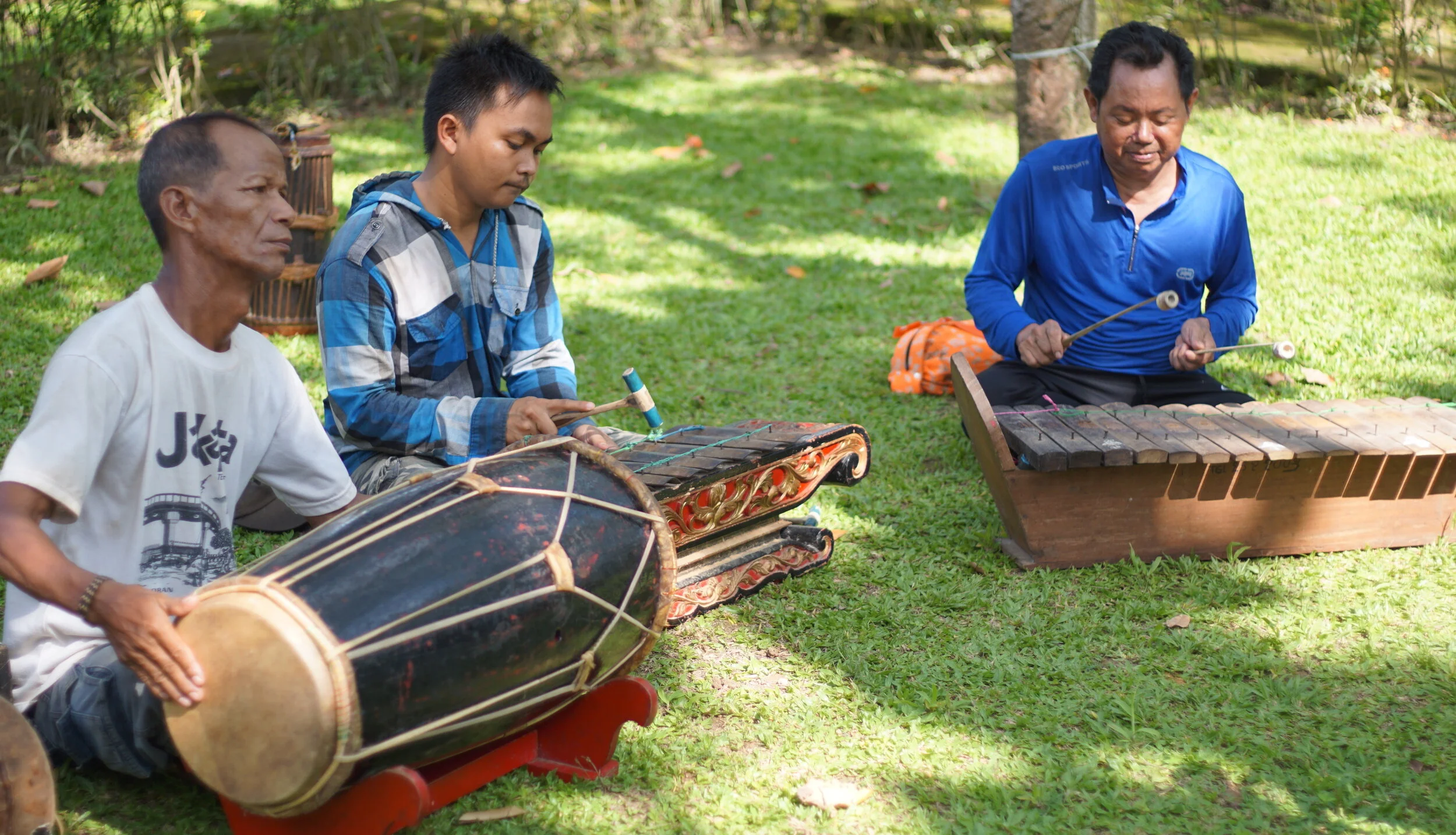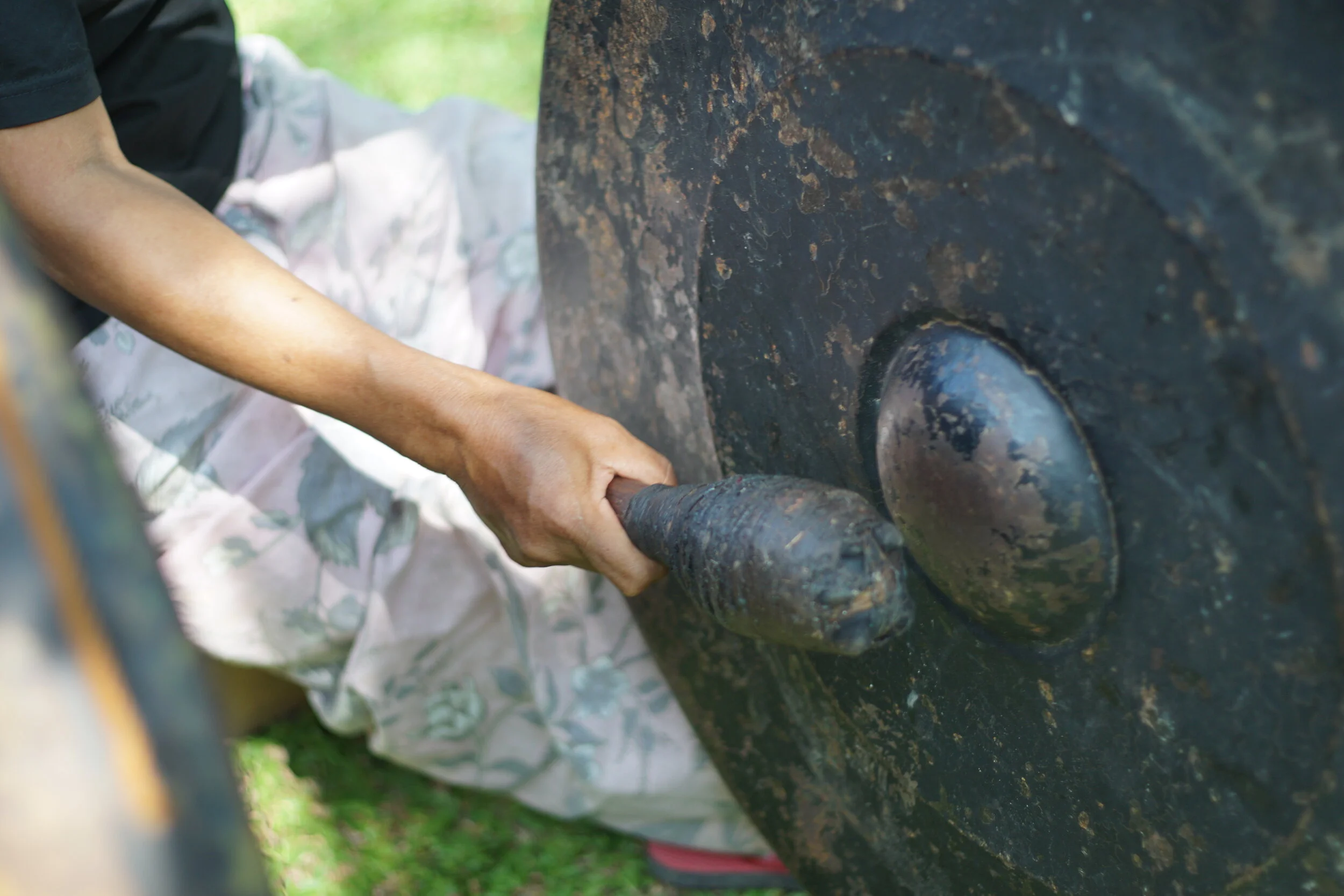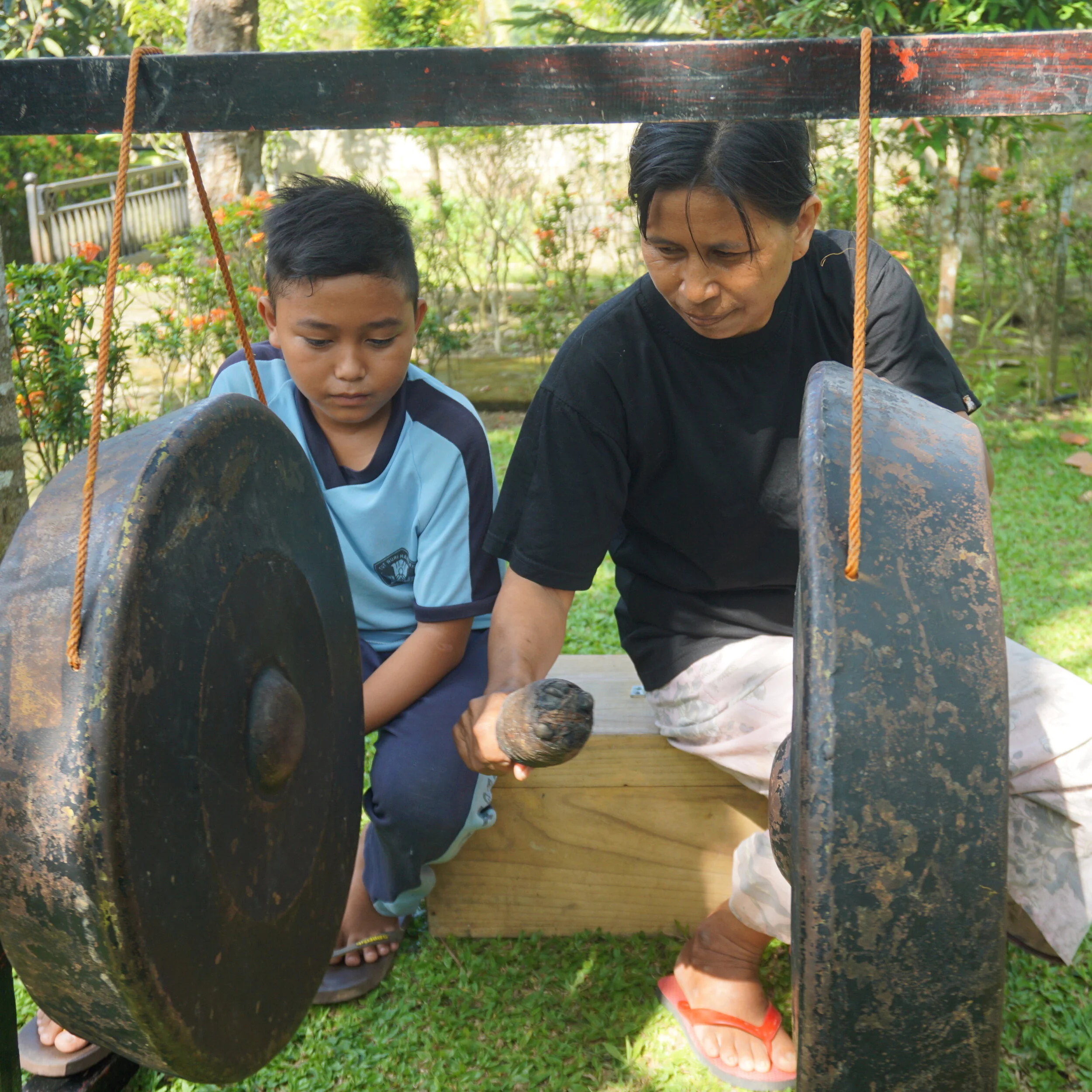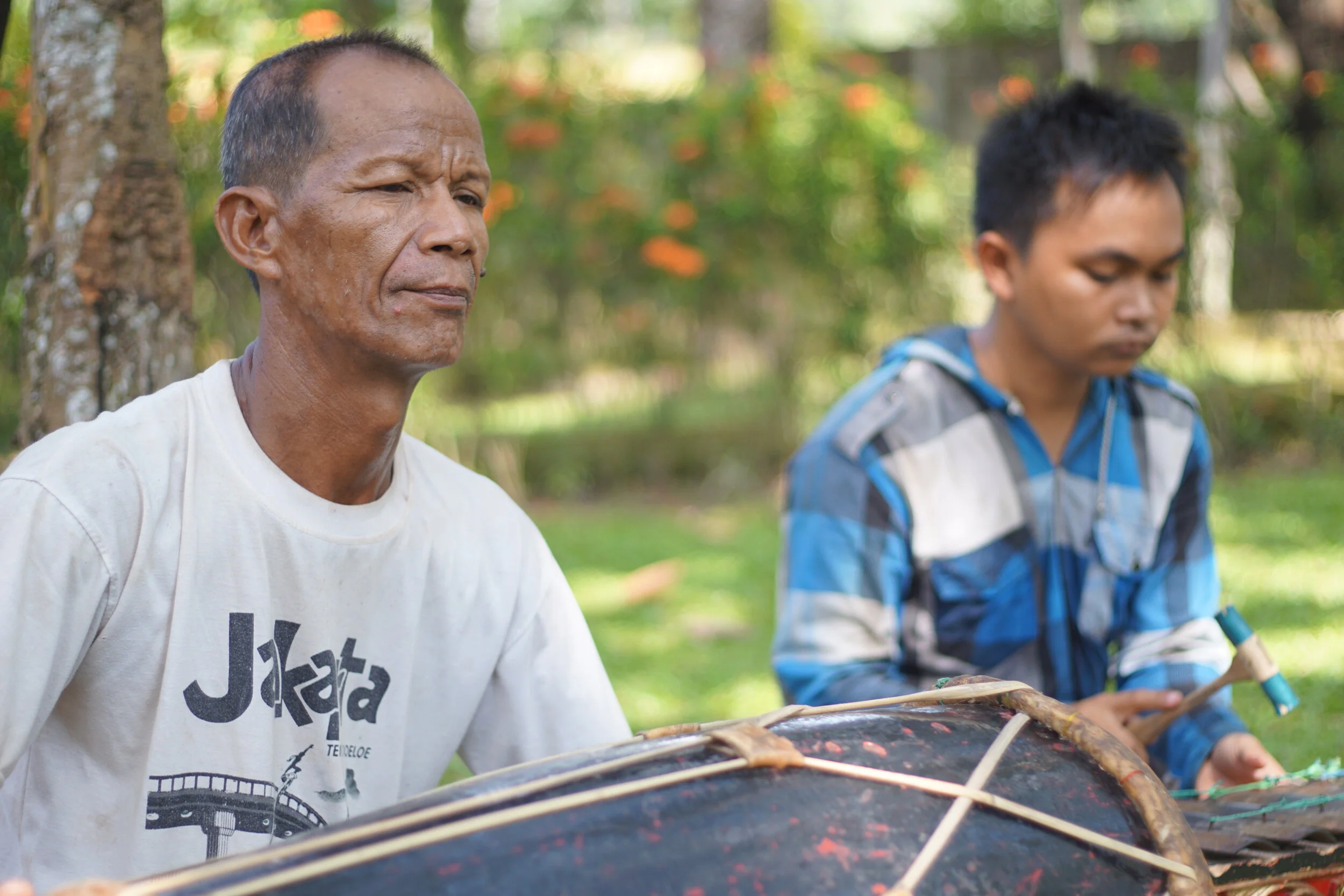Dayak Halong Ritual Music in South Kalimantan, Pt. 3: Gamalan
Sound: Gamalan Dayak Halong (usually called simply gamalan.)
Gamelan is one of Java’s great exports. In the modern era, these (mostly) percussion ensembles have spread far and wide, both around Indonesia (often carted to far-flung islands by Javanese transmigrants) and around the world (carried by multiple flows of academics, musicians, and diplomats!). These modern national and international flows are merely the latest chapter in a tale of musical migration that goes back centuries. To trace the development and history of this musical format and its migration would take a whole book (Henry Spiller takes a good crack at it in his brilliant and easy to read Gamelan: The Traditional Sounds of Indonesia), but a condensed version is doable!
Gong ensembles are widespread across Southeast Asia, and in Indonesia variations are (or once were) found almost everywhere except Papua; in the archives of Aural Archipelago, you can find examples from Sumatra (talempong and talo balak), East Nusa Tenggara (Sumbanese funeral gongs and Timorese leku sene) and Kalimantan (the Dayak ritual ensemble called kelong.) Historical evidence is too scarce to pinpoint exactly when the gong ensemble called gamelan emerged in its primordial form in Java, with some guesses tracing it back to the era of Majapahit, the great Hindu-Buddhist kingdom which dominated Java (and other islands, as we will see) in the 14th to 16th centuries.
The difficulty in this tracing partly comes down to definitions: what exactly is a gamelan? These ensembles have evolved over time, with diverging and emerging forms making for a lot of threads to follow. Some key elements which ethnomusicologists like Philip Yampolsky have honed in on are the use of melodic metallophones (xylophone-like instruments made of metals such as bronze or iron) and music with a kind of stratified (colotomic) structure rooted by hanging gongs. In his liner notes for the gamelan-centric Volume 14 of his Music of Indonesia album series, Yampolsky explains that the jury is out on when exactly ensembles meeting these specifications began to be played; evidence from the Old Javanese epic poem Sumanasantaka suggest that gamelan-like ensembles may have been around as early as the 13th century, but most can agree that by the Majapahit era, court gamelan similar to the gamelan sekaten or sekati were likely emerging. These archaic gamelan, famously adopted (adapted?) during the Islamic era to celebrate the birth of the prophet Muhammad, are still played annually in the courts of Yogyakarta, Surakarta and Cirebon. If we are to take these ancient ensembles as evidence, early gamelan forms exclusively used what the Javanese call the “loud” instruments (gongs and metallophones), with the “soft” instruments like xylophone (gambang), spike fiddle (rebab), and gender (a soft, keyed metallophone) added later.
Another challenge is to trace exactly when gamelan began to spread from its hypothetical birthplace in Central Java. Bali, with its rich and diverse gamelan tradition, was surely one of the first inheritors of this new format. Gamelan was also eventually adopted in Sundanese West Java, where ancient gamelan called goong renteng, still played today, are said to be relics of the era when the Sundanese kingdoms of Pajajaran were dominated by the Javanese sultanate of Mataram. Just as in Bali, gamelan is now such an integral part of Sundanese culture and identity that it would be offensive to some people in West Java to even consider that it is technically an import. The same might be true for areas like Lombok, which likely adopted gamelan hundreds of years ago during a time of Balinese occupation. On that island, the native Sasaks took the format and created unique variations like the gamelan kelentang.
The spread and assimilation of gamelan into cultures across Java, Bali, and Lombok seems logical when you look at a map, as if the music oozed across land like a lava flow, eventually hitching a ride on ancient ships to cross those narrow straits. There’s another corner of Indonesia, though, where gamelan has been played for centuries, one which has often been overlooked. In the province of Kalimantan Selatan (South Kalimantan, in the southeast corner of Indonesian Borneo), multiple gamelan cultures thrive. These traditions are proof that in centuries past, gamelan didn’t just skip across straits, but bounded across the Java Sea.
To understand this, we have to go back to the era of Majapahit. Dating from the late 13th to the early 16th century, Majapahit was an empire which dominated a huge swath of vassal states from Sumatra to New Guinea. One of these states with ties to Majapahit was a mysterious Hindu-Buddhist kingdom called Negara Dipa. Now linked by empire, this comparatively tiny kingdom in the heart of Borneo soon became a beneficiary to the powerful cultural trappings of Javacentric Majapahit.
Just as in Java, though, the historical evidence detailing this era is scarce. One key document is a legendary sixteenth-century court chronicle called the Hikayat Banjar, which describes these early Hindu courts as being full of Javanese imports like gamalan (Not a typo! Spelled with an “a” in Kalimantan), wayang kulit (shadow puppet theater), and topeng (masked dance.) As Negara Dipa gave way to another Hindu-Buddhist kingdom, Negara Daha, and then to a centuries-long reign by the Islamic Sultanate of Banjar, ties to Java remained.
Under the Banjar Sultanate and after its fall in the 19th century, a somewhat cohesive ethnic identity emerged in the Muslim villages of South Kalimantan: the people were urang Banjar or Banjarese, and arts like gamelan flowed into these villages from the courts just as Islam had. As the Banjar court was more or less extinguished, traditions like gamalan and related performing arts like wayang and topeng lived on in the villages. Just as in Java, where villages across the island seized on this courtly musical tradition and made it their own, villages across South Kalimantan kept gamalan alive in their own way. The pared-down iron gamelan found in the villages of Java are echoed in Banjarese villages across South Kalimantan, where locals crafted a form and aesthetic which in some ways differs considerably from the any music in Java, ancient or modern, court or kampung.
The cultural transmission didn’t stop with the Banjarese, though (and gamalan Banjar will get its own post soon enough.) No, this story gets deeper, and in some ways much more interesting.
***
In South Kalimantan, various indigenous Dayak groups have lived side by side with the Muslim Banjarese for centuries. Considering this close contact, it may come as no surprise that there has been a certain amount of cultural transmission between the groups: many Dayaks speak the Banjarese language (bahasa Banjar), for instance, and certain musical elements thought of as Dayak have made their way into the musical world claimed by Banjars. I was still taken by surprise, though, to find that Dayaks across the province have, just like their neighbors, embraced gamelan into their culture.
In my most recent posts about music in South Kalimantan, I already began to sketch the musical and cultural scene of the so-called Dayak Halong (also called Dayak Dusun Halong), a Dayak group living in the area around the Halong River in the Balangan region. The Dayak Halong are animists (with many converting to Buddhism, a religion seen as in tune and tolerant of their ancient beliefs) with a complex system of spirituality, much of it centered on the shaman-like folk doctors called wadian or balian. In those recent posts, I wrote about some of the music played by the Dayak Halong for curing and thanksgiving rituals. Some of it, like the gandrang music played only on drums, can be thought of as purely indigenous, with little obvious influence from outside cultures (this isn’t just my take on it as a classification-crazy foreign researcher: the Halong also consider gandrang as their most “asli” (original) music. ) The other main genre, kelong, uses tuned gongs or gong-chimes called kanong, instrumentation which has likely been around for centuries but is still arguably an import if you trace back far enough.
And then there’s gamalan, a pared-down take on that ancient Javanese import. As my friend, Banjarese ethnomusicologist Novyandi Saputra, explained, the instrumentation of Dayak Halong gamalan is pretty minimalistic compared to its Banjarese counterpart. While gamalan Banjar is fleshed out with fundamental Javanese-inspired instruments like dawu (similar to Javanese bonang) and kanong (equivalent to Javanese kenong), Dayak Halong gamalan is simplified enough to be played by just five musicians: one playing two large hanging gongs or agung, one (or two) playing the seven-keyed metallophone called sarun, one playing the double-headed barrel drum called babun, and one manning the sixteen-keyed gambang xylophone.
A close look at the way these instruments are used can give us a neat glimpse into the way that the gamalan has been “Dayak-ized.” Take those gongs, or agung. In Banjarese gamalan and the Javanese style from which it’s derived, the strokes of these gongs are spread out widely, with the largest gong (agung ganal in the Banjarese style, gong suwukan in Java) only played to mark the end of a particular cycle (these cycle-marking gongs are called colotomic instruments in gamelan lingo.) That large gong and other colotomic gongs (like agung halus in the Banjarese style or kempul in Java) are played so sparingly that they have a kind of weight to them. In the Dayak Halong style, my friend Novyandi explains, “the strokes of the two agung are played constantly - this repetition is a style found only in gamalan Halong.” This steady, frequent beating of the two agung gongs may confuse a Javanese or Banjarese gamelan musician, but this steady repetition is a hallmark of Dayak Halong ritual music: check out the recordings of kelong and gentur from my previous post to hear more of those constant gong strokes. Most Dayak Halong ritual music is designed to highlight long, elaborate phrases but to foster a heightened amosphere and spiritual energy, so the relative frequency of those foundational gongs makes sense. As I shared in my previous post, shaman-like wadian consider ritual music like gamalan as an integral element of their possession-filled ceremonies, with music described as a kind of “vehicle” (pengantar) for moving from this plane to the supernatural one.
Another Dayak-ized element of this gamalan might be found in the gambang, the xylophone which elaborates on the melodies sketched out on the sarun. In other gamelan forms, the gambang is less prominent, its filigreed wooden melodies woven tightly into the larger tapestry. In Dayak Halong gamalan, though, gambang seems to take center stage in the way that kanong does in the kenong ensemble. Pak Angga, the gambang player in these recordings, seemed to wield his twin mallets (un-rubbered for a brighter sound) in a style influenced by his kanong playing, with his elaborating melody savoring single notes, bouncing in place before moving onward in a bubbly, syncopated stream.
Despite these indigenized elements, the roots of this music clearly once passed through Banjar hands. Dayak Halong gamalan isn't heavy on jargon, but those terms that do exist are ripped from the Banjarese, like babun for drum and “Galaganjur,” a song form. Other terms are a clear fusion: one piece, “Ayakan Wadian,” takes a Banjarese song form (ayakan) and pairs it with the local term for the shamans or folk doctors (wadian) who lead the rituals for which this music is played. Another remnant of Banjarese acculturation: the Dayak musicians know and savor “wayang” (puppet show) pieces, complete with the busy interlocking sarun parts so essential to Banjarese music for wayang. The Dayaks, though, have no wayang culture to speak of.
Despite this and plenty of other clues (that slendro pentatonic scale, straight from Java via Banjarmasin, or the fact that the instruments are almost always made by the Banjarese down south), the Dayak Halong reject the notion that gamalan has Banjarese roots at all. It is, they say, pure Dayak Halong, as asli (“original”) as kelong. Just as with kasapi and kelong music, the gamalan is tied in local myth with the legendary mother of all shamans, Nini Yuri, who is said to have created gamalan straight from a mystical vision. Fair enough: gamalan feels right at home in the aruh adat healing and thanksgiving rituals central to Dayak Halong spiritual life. Tucked to the side of a palm-fiber altar in a balai (traditional Dayak communal home or meeting place), the gamalan leads the balian on his spiritual journey just as smoothly as the other musics, its instruments marked with white chalk crosses as a sign of their sacred status. Gambang blending in with the wooden floorboards, there’s no sign that gamalan hasn’t always been here, no sign of its long journey through kingdoms past.
I don’t blame the Dayak Halong for excising the Banjarese from their understanding of gamalan, intentionally or otherwise. From Halong to the Meratus Mountains, Dayaks in all corners of South Kalimantan have been marginalized by the more powerful and numerous Banjarese, with Dayaks often fighting a losing battle against a majority who once cast them off as “isolated tribes” (suku terasing), the subject of both mockery and fear. On a personal level, relations between the groups are friendly enough, but structurally the relationship remains fraught.
In this light, the Dayak Halong appropriation and reimagining of gamalan is an empowering thing, an expression of agency and creative re-use. Consider gamelan’s spiritual power: in addition to its potent traces of courtly prestige, gamelan has a spiritual potency drawn from its Hindu-Buddhist roots and beyond into Java’s spirit-filled animist past. This spiritual potency lives on in Java (see gamelan’s role in the spirit possession rituals of jathilan and ebeg), and in Banjarese gamalan too. It makes sense, then, that the Dayak Halong, too, would harness gamalan as their own spiritual vehicle, borrowing this potent medium from their more powerful neighbors and embracing it for their own purposes.
This is why I’m finally of two minds about that Java (and Banjar)-centric history we started this post off with. I always love trying to find where things came from, how music spreads in unexpected ways. In doing so, though, I’d hate to distract from gamalan’s wonderfully specific instance in the here and now. We can try to trace it back to Banjarese kingdoms and Javanese courts, sure, but in the present, this is Dayak Halong music. Played by Dayak Halong hands and imbued with Dayak Halong meaning, gamalan is now just at home in the Halong as it is in the courts of Java.
Context:
These recordings are the result of one long, beautiful recording session with a cast of overlapping musicians featured in the first two parts of this series. To learn more about the context of these recordings, you can read the first part of the series here.
